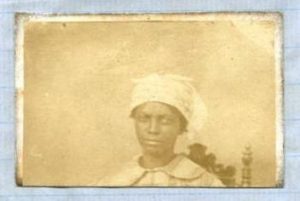[Each month we feature a “creator” or one of the SHC’s manuscript collections. In archival terms, a creator is defined as an individual, group, or organization that is responsible for a collection’s production, accumulation, or formation.]
John Charles Campbell and Olive D. Campbell were missionary teachers in Appalachian Tennessee, Kentucky, Georgia, North Carolina, and Alabama at the turn of the 20th Century. John Campbell received a research grant from the Russell Sage Foundation to study the mountain regions of the South in 1909 and soon became an expert on the economic and social conditions of the Appalachians. He was secretary of Southern Highland Division of the Russell Sage Foundation in Asheville, N.C.; author of the Foundation’s survey of conditions in the Southern Appalachians; and organizer of the Conference of Southern Mountain Workers.
His wife, Olive Dame Campbell (1882-1954) traveled with her husband; founded and directed the John C. Campbell Folk School and related cooperatives at Brasstown, N.C.; and participated in the formation of the Southern Highland Craft Guild. While working with her husband, she collected mountain ballads and, after his death in 1919, prepared the report of his survey for publication.
Their collection gives a good look into life in Appalachia in the early 20th century. Of particular interest, at least to me, are the volumes and the photographs. Olive Campbell kept diaries of her trips to locations in Georgia, North Carolina, Tennessee, and Kentucky. In these diaries, she describes things such as the kinds of food she ate, the houses she went into, and the people that she met.
The photographs are divided into two groups: loose photographs and photograph albums. The loose photographs are primarily images of John Campbell, Olive Campbell, and their families, as well as pictures of their students, their school, and trips that they took. The photograph albums have pictures of Appalachian mountain scenery, students at the Campbell’s schools, and people both at work and at leisure. In PA-3800/8, there is a “Photo-essay on illicit distilling operations in Kentucky, North Carolina, and Tennessee.”
The John Charles Campbell and Olive D. Campbell Papers are collection number 3800 in the Southern Historical Collection.


